
| Home | Events | Reports | Sightings | Checklist | Bird Guide |
| Birding Info | J Bird Names | References | Links | About Us | Contact Us |
| Wakka Nature Center | Back to Reports Top | ||||
Another beautiful Sunday morning, rather hot this time, requiring protection against the sun. We gathered in the parking lot of the Wakka Nature Center, a few kilometers north of Tokoro, and the very first sound to reach our ears as we emerged from our cars was the remarkable repertoire of a Black-browed Reed Warbler in a slightly reedy spot by the Nature Center. We walked very leisurely for two hours along dirt and paved paths up to the shore of the Sea of Okhotsk and back to the Center.
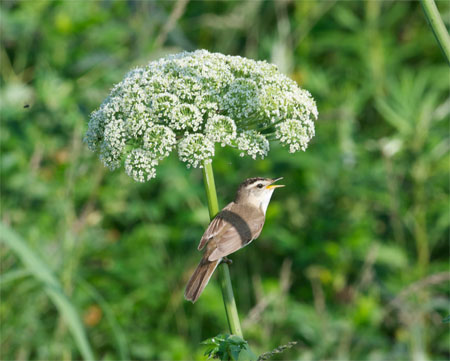 |
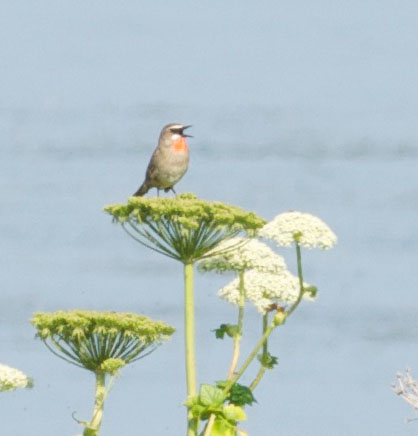 |
| Our welcoming committee: The Black-browed Reed Warbler above (Ko-yoshikiri; Acrocephalus bistrigiceps) who sang here all morning and maybe all day as well, and a Siberian Rubythroat (No-goma; Calliope calliope [OSJ 2024]) at the right with the waters of Lake Saroma in the background. | |
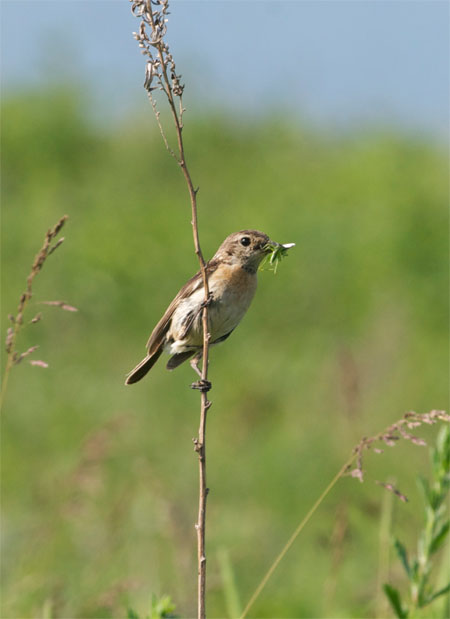 |
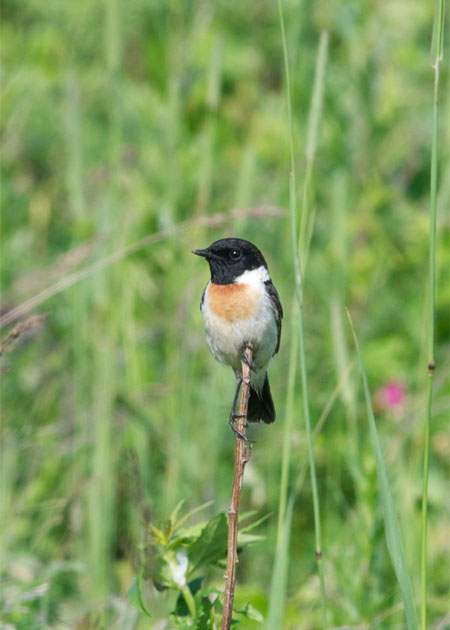 |
| A pair of Siberian Stonechats (No-bitaki; Saxicola maurus* stejnegeri) at around 7:20 a.m. along a dirt path. It seemed I was getting too close to their nest, as they became vocally agitated. The female would not go to the nest with her grasshopper meal until the perceived threat receded, so I withdrew from the area. [*OSJ 2024 update: Amur Stonechat, Saxicola stejnegeri.] | |
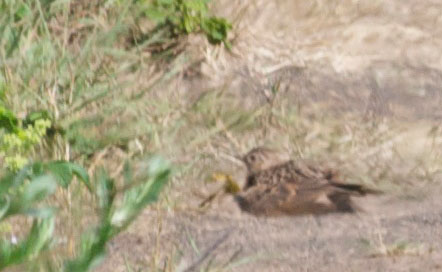 |
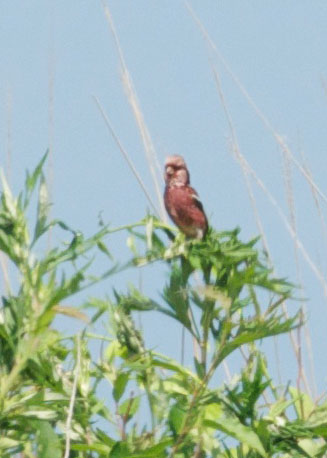 |
| Above: A Eurasian Skylark (Hibari; Alauda arvensis) takes a bath in the dust along the path ahead of us. Right: On the way back from the Sea of Okhotsk shore (where there was only a single cormorant on a distant buoy), we encounter a pair of Long-tailed Rosefinch (Beni-mashiko; Uragus sibiricus sanguinolentus) of which this is the male. [OSJ 2024 update: Siberian Long-tailed Rosefinch; Carpodacus sibiricus sanguinolentus.] No photo: Another common bird here was the Common Reed Bunting (Oo-jurin; Emberiza schoeniclus). |
|
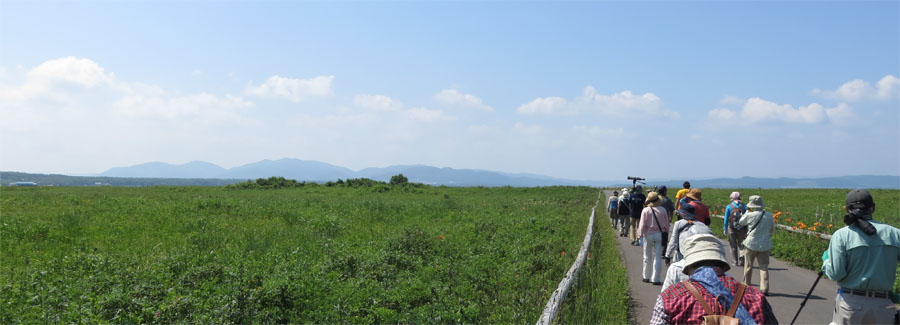 |
|
The Wakka Nature Center is open from late April to late October. Open hours are 8:00 - 17:00 except for June, July, August when it is open 8:00 - 18:00. The nearest hotel, even in walking distance, is the 4.5-star Lake Saroma Tsuruga Resort that also has a restaurant, shop, and a hot spring that you can use even if you do not stay there. Further information in English about the hotel is here. Other shops are in the area, too, as is the "Tokoro Historical Ruins Forest" located across the street from the hotel. More information about the ruins and small museum there can be found by doing a search for "Tokoro Okhotsk Culture". If you are interested in Okhotsk Culture, you might also want to visit the new Moyoro Shell Mound Museum in Abashiri that opened in May 2013.
Today's list: Oriental Turtle Dove (Kiji-bato), Great Cormorant (Kawa-u), Gray Heron (Ao-sagi), Common Cuckoo (Kakkou), Black-tailed Gull (Umineko), Black Kite (Tobi), Eurasian Wryneck (Arisui), Large-billed Crow (Hashibuto-garasu), Eurasian Skylark (Hibari), Brown-eared Bulbul (Hiyodori), Lanceolated Warbler (Makino-sennyuu), Middendorff's Grasshopper-Warbler (Shima-sennyuu), Black-browed Reed Warbler (Ko-yoshikiri), White-cheeked Starling (Mukudori) [a flock of around 50 young birds flying overhead], White Wagtail (Haku-sekirei), Oriental Greenfinch (Kawara-hiwa), Long-tailed Rosefinch (Beni-mashiko), Black-faced Bunting (Aoji), Siberian Rubythroat (No-goma), Siberian Stonechat (No-bitaki), Common Reed Bunting (Oo-jurin), Feral Pigeon (Kawara-bato/Do-bato) [22 species]
| Mar | Apr | May | Jun | Jul | Aug | Sep | Oct | Nov | |
|---|---|---|---|---|---|---|---|---|---|
| Land | 5 | 20, 30 | 7 | 3 | |||||
| Sea | 5, 8, 15, 19 | 23, 26, 27 | 23 | 1 | 7 | 10, 31 | 14 |
